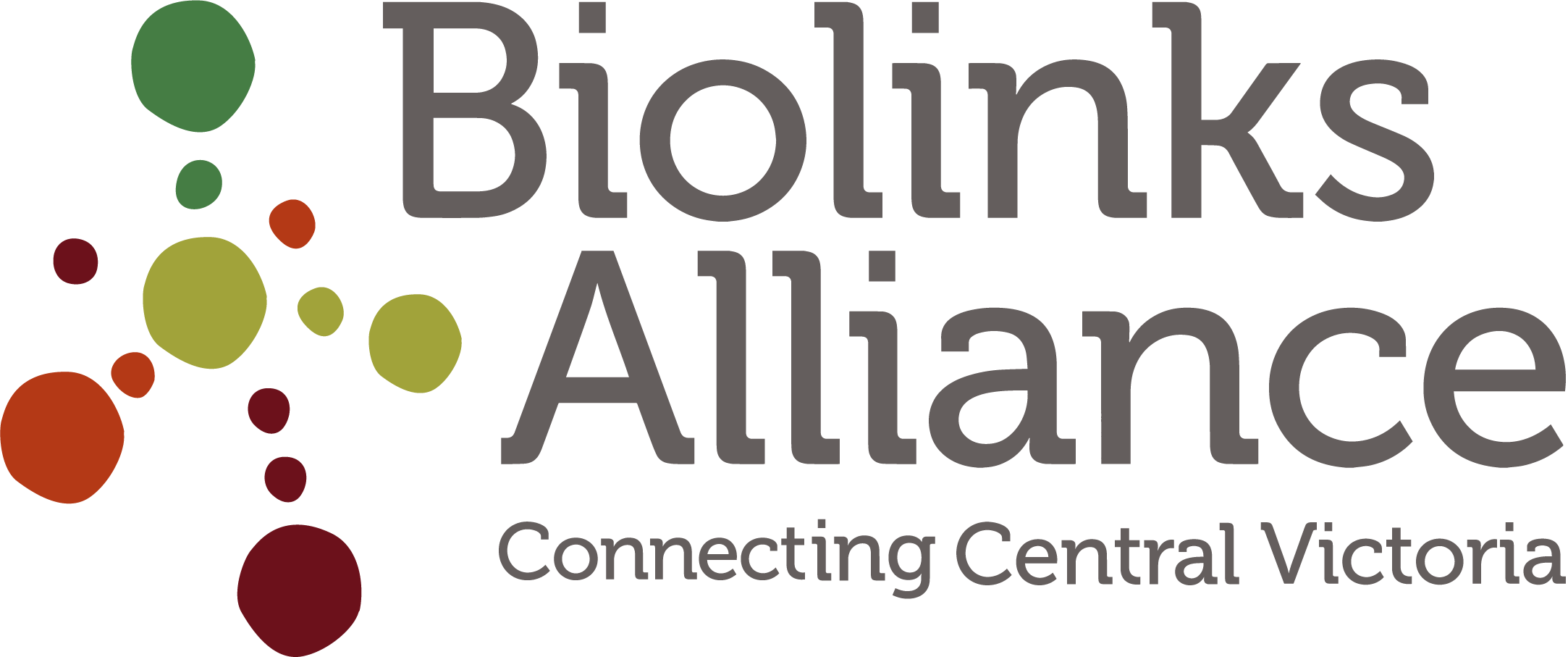Ecological Thinning at Spring Plains Watershed Repair Pilot Project
Thinning methodology at Spring Plains Nature Conservation Reserve
By Biolinks Alliance Ecologist, Dr Chris Pocknee
Dr Chris Pocknee talks about the specialised approach of ecological thinning, one of the innovative interventions used at our Watershed Repair Pilot Project at Spring Plains Nature Conservation Reserve (NCR) on Taungurung country. This technique is used in dense regrowth Box Ironbark forest to accelerate forest maturation and restore biodiversity.
Map of the Spring Plains project site showing the ecologically thinned area.
What has happened to our Box Ironbark forests?
In Box Ironbark forests that have regrown after disturbances such as timber harvesting or mining, there tends to be thick stands of Eucalypt regrowth, crowding out understory species and reducing biodiversity. These broken ecosystems do not function as they should, often suffering from a combination of issues, including:
Reduced water infiltration into the soil.
Erosion and depletion of topsoil from rainfall shedding across the soil surface.
A lack of woody debris on the forest floor, limiting the ecological function of the forest.
Homogenisation of biodiversity.
A loss of mature, hollow-bearing trees.
What is the state of Spring Plains NCR?
Spring Plains NCR is impacted by all of these issues. When it rains water sheets off the ground surface at high velocity, shedding organic matter and creating deep gouges in the gullies. A lack of coarse woody debris means this shedding is unimpeded. The eucalypts across the site average 21.3 cm diameter at breast height (DBH) with large amounts of coppiced regrowth creating a dense and immature canopy at 930 stems per hectare. The benchmark DBH for Box Ironbark forests is 70 cm (DEECA, 2004). Given this disparity, an obvious lack of hollow bearing trees reduces the carrying capacity for hollow dependent species. Homogenisation of biodiversity is intensified due to the fragmentation and degradation of surrounding landscapes and introduced flora and fauna.
What is ecological thinning?
Ecological thinning is a technique whereby carefully selected canopy trees in dense regrowth are strategically removed to reduce competition for water and nutrients for the remaining trees. This also increases light penetration to the forest floor, allowing increased understorey growth. Leaving thinned trees on the ground rather than removing them provides key nutrient cycling to the system, as well as critical habitat for fauna. This coarse woody debris assists in soil rehydration by impeding the movement of organic material, helping to rebuild topsoil. This method requires a tailored and localised approach for each forest with an intimate understanding of the surrounding landscape composition and history.
What were our methods?
Our Ecologist, Dr Paul Foreman, designed the project restoration approach that built on existing research and used a novel combination of interventions. Initial baseline data was collected, allowing us to measure the impact of the implemented restoration approaches over time.
For our thinning approach, we used the basal area and stem density from reference local Box Ironbark forests to inform the thinning treatment in our project area. Based on the Parks Victoria thinning trials, we selected a patchy thinning application from the four trial methods that they studied to compare any differences in growth rate and habitat structure over time.
Specialist contractors were employed to carry out the work as a specific skill-set was required. In our application we removed approximately 33% of the basal area across the entire 138 Hectares by only removing trees under 30 cm DBH.
What we hope to achieve
We are monitoring the impact of ecological thinning on the overall forest health, and if this technique can help the forest become more fire resistant and resilient to climate change. Monitoring continues to be vital in our research, helping us to track the diameter of the remaining canopy trees, and growth rate and diversity of understory species.
Ultimately, through our research and monitoring, our aim is to enable broad implementation of these ecological interventions to degraded Box Ironbark forests across Central Victoria.
To undertake this work on public land we had to jump through many bureaucratic hoops. Stay tuned - this year we will be sharing our learnings of the approval process with you.
Explore further
Find out more about thinning in this video from our Leaky Landscapes Symposium about thinning trials in Box Ironbark forests by Parks Victoria.

